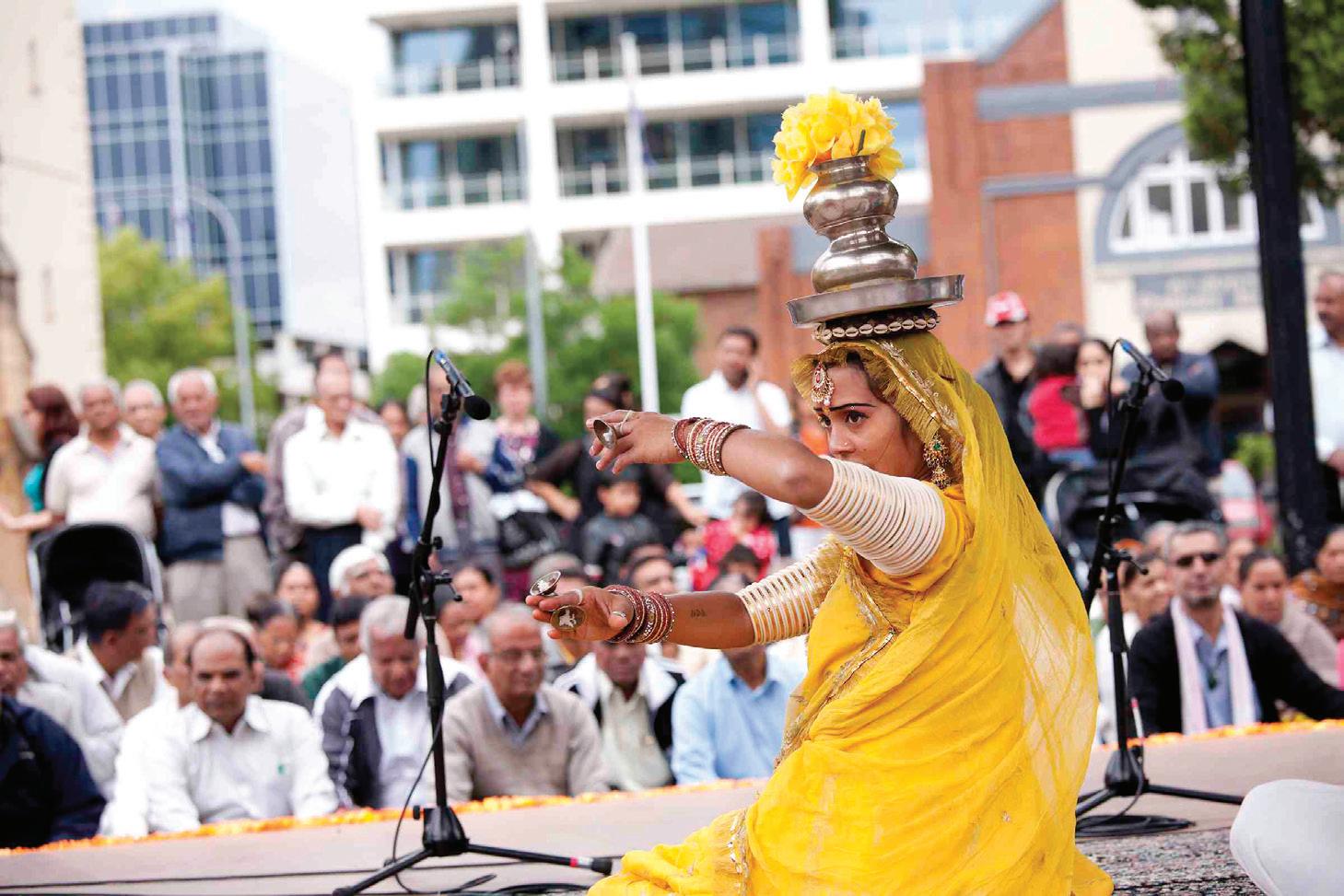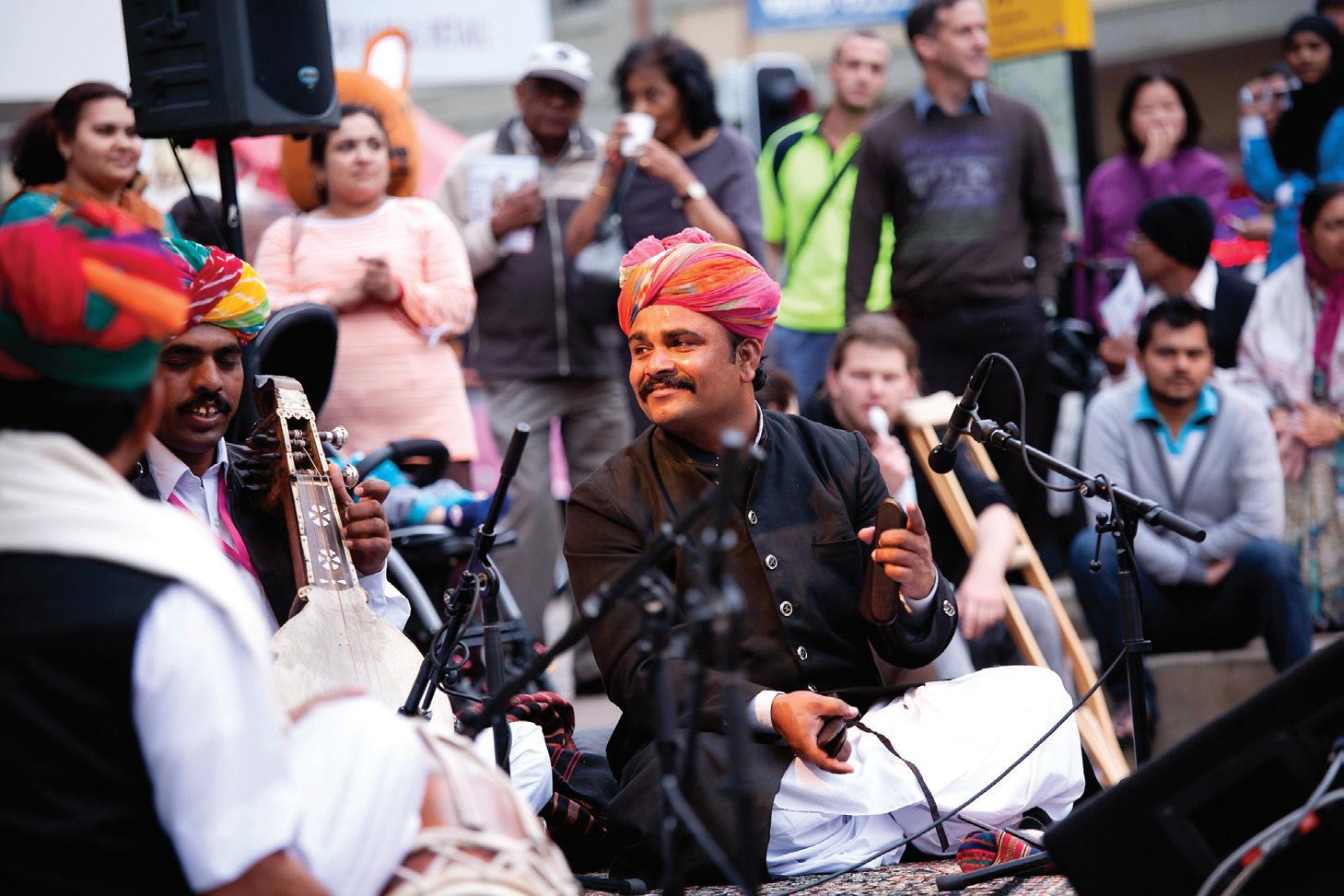
3 minute read
Dare your body to remain still!
from 2010-11 Sydney (2)
by Indian Link
Colourful turbans and grand moustaches top off their crisp white shirts, black coats and pleated they play their ancient instruments and work up a crescendo, the crowds clap along in rhythm and sway with them.
The Manganiyars were a huge hit when they toured here in January this year as part of the Sydney Festival. Now they are back again for Parramasala, bringing with them their particular brand of earthy music from rural Rajasthan.
The Courtyard at Riverside Theatres is decorated in Rajasthani style, bright mirrorwork cushions strewn around on dhurries . The atmosphere is perfect for an afternoon of folksy wedding songs – for this is what the musicians have picked for this event, out of their usual repertoire of birth, death and family songs.
This time round they’ve brought with them their distant ‘cousins’ the Langa musicians, and together they sing gentle songs of letters passed between lovers and of wedding traditions such as the bride’s girlfriends stealing the groom’s shoes in tease.
The Manganiyars and Langas have throaty singing styles which they embellish with their ancient instruments. The stringed khamaycha , made of mango wood, is the centerpiece, and on this afternoon, the instrument we see being played was apparently handed down from four generations. A variety of flutes are also used – been, murli, surnai , and the fascinating algoza, a double flute. The dholak provides the beat, but the khartaal (a pair of wood clappers) is simply thrilling. The khartaal player is the most animated - getting up on his knees in full enthusiasm while the others remain seated, swinging his arms all around him, and varying the pitch of his clapping from barely audible, right up to thundering!
Having learnt their art from their forebears, these musicians are classified as ‘folk artistes’ even though large smatterings of classical ragas are clearly evident in their pieces. Although the classical elements are not rigid here, it is easy to see the roots of stylised classical Indian music.
And of course, some of their numbers have been traditional classical Indian compositions, The crowd ranged from different age groups, from teens to the mid-40s, and came from a range of different backgrounds, from Indian-origin to local


The show began with Nitin and his band arriving on stage armed for action with guitars, keyboards, decks, tablas, and flute. Instantly the venue was transferred into a totally different world of blistering sounds, from cutting edge drum and bass to sensational soundscapes. They soon had the faithful dancing away
The combination of moving lightsyellows and reds and purples and blues - along with sounds from a medley of instruments made for compositions that helped that audience lose themselves in an eclectic atmosphere, one which they are unlikely to forget for some time. We came away with feet sore from dancing but with the tunes still humming in our heads, blown completely away with the Sawhney experience.
What a way to end the weekend…
Astha Singh
converted to huge Bollywood hits in recent times. The original versions of Nimbuda nimbuda and Kesariya balam , bring the house down again on this occasion, and by the time that evergreen number Jhoolelal comes on, the mainly non-Indian crowd has been well and truly won over. Whether you understand the words or not, the rhythm is enough for you to get lost in this music, and there’s no way you can prevent your body from swaying along!
The next and final act get straight into it: the Terataali dancers of the Kamar tribe hold the audience in complete awe. The first time we see women on stage this afternoon (the musicians are all men), the dancers perform while sitting. Their bodies and arms sway as they clang away on manjiras (little cymbals) tied to different parts of their bodies, perfectly in rhythm. There are thirteen little cymbals on each dancer’s body, and they are struck in thirteen different ways – hence the name Terataal – the dance of thirteen beats. The movements are swift and the clanging is loud, as the manjiras twirl around in synchronized frenzy. The dance builds up in difficulty as the dancers shift sides and even lie on the ground, hold a dagger in between their teeth or balance a pot on their heads!
As the show comes to a close, everyone wants to take a bit of Rajasthan back with them, even if it is only a turban that will probably hang on a living room wall in a suburban Sydney home …
The earthy quality of it all has been, in a way,
It is heartening to see the revival of folk arts such as these, when the world is rapidly losing much of its traditional skills and wisdom. Noted Indophile William Dalrymple wrote passionately about the efforts made by erstwhile Rajasthan royals in stimulating this resuscitation in his latest book Nine Lives (also the name of the show he presented at the Opera House
Take the chance to go see such an event next time an opportunity presents itself – you will be pleasantly








